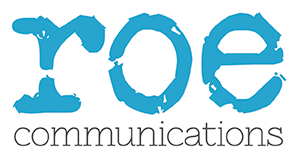Business schools just starting to build a press profile often assume that they can’t get journalists’ attention without press releases.
And they are a tried and tested tool – if you have something genuinely newsworthy to say.
The difficulty, of course, is that you may not always have a “big story” in the pipeline.
And you may not have anyone within your team who can write them.
But here’s the rub. To build a reputation, you need to engage frequently with the media.
Relax! There are plenty of other ways to build your reputation without having to write press releases.
Here’s a rundown of other tactics to try.
1. Email pitches
Let’s just get right out there and say that we have nothing against press releases!
But, in our experience, the most fruitful engagements with journalists are often more personal.
Email pitches can get you a good result without writing press releases.
This can include proactively suggesting an angle or interview idea to a journalist (particularly if you know they are planning an article on a specific topic).
You will find many advice articles online about how to construct the ‘perfect’ email pitch.
But, in essence, it will have a few key ingredients:
a.) Relevance to a wide section of the journalist’s audience
b.) Novelty (and we mean new to the outside world, not just new for you)
c.) Topicality – speaking to an emerging trend or challenge, for instance
d.) Humanity – offering a case study, for example
e.) Helpfulness – how does knowing this help the audience?
f.) Brevity – short, to the point, with a stand-out subject line.
Be aware, however, that emailing journalists cold can be an uphill struggle. It’s easier to establish a prior relationship before you press the send button.
For further advice on how to pitch successfully to journalists, click HERE.
2. Profile interviews
Do you have an engaging leader who can articulate your school’s purpose, or has an interesting back story?
Then you might want to consider profile interviews. There are numerous columns across national and international media that you can approach without press releases. Researching these is well worth the effort.
Where you can pitch depends, in part, on their existing profile. If they have a significant social media following, have written books, done TED talks, or have a big back catalogue of thought-leadership pieces, for instance. If they don’t, you might want to start small – trade or specialist media, for example. Once established, you can build up.
Don’t forget that a high-quality photograph of your leader can make or break your chances of success.
3. Opinion pieces
Like profile pieces, many media outlets actively seek opinion or commentary on topical issues from experts.
You’ve got a few choices here. You can put forward faculty experts on their specialist topics. If the topic is on business or higher education, you can also engage with your Dean, or Programme Heads, such as your MBA Director.
In general, the more outspoken, the better. Opinions that go against the prevailing argument work well, as do predictions.
Remember, however, that there’s a fine line between having a strong enough opinion and staying on brand. With this kind of activity, it’s always good to have a checking process to ensure that you aren’t saying anything to upset your stakeholders. And never criticise your competitors.
4. “How to” articles
Media outlets love to help their readers. As such, many have advice columns where third parties can help them overcome a certain challenge. Some, such as Authority magazine, even publish a list of topics they are focusing on.
As with all of the opportunities, pitching into these columns is highly competitive.
Be aware that quite a few trade media outlets now offer a blend of sponsored and non-sponsored content. If a journalist asks you to pay for editorial or a web link, don’t be offended. Judge each one on a case-by-case basis on whether the piece is talking to the right audiences for you, and will meet your PR objectives.
5. “Piggybacking” on the news agenda
One of the quickest ways to get into the media is to offer commentary on the current news agenda.
This is short, sharp, on-the-day activity. To do this effectively, you need to monitor breaking news stories and offer spokespeople early in the morning.
Whatever your comment or spokesperson, they need to add value to the story (i.e. not just re-hash or summarise what others are saying). They might share some relevant new research, or some insights from a similar issue previously, but without having to write press releases.
#Tip: you can line up spokespeople and commentary for known events e.g. General Elections, in advance.
6. Case studies
Journalists love case studies, as they bring quotes, pictures and a ‘human’ element to their stories.
Having student and alumni case studies available to speak to the media about their positive experiences with your business school is a no-brainer. You will need compelling photographs AND their written permission to be interviewed for a press story.
Be aware, though, that not all case studies make good advocates. Click HERE for more detailed advice on the dos and don’ts of choosing a successful case study.
And when your coverage is published, remember to push it out on social media and look for ways of leveraging their networks (especially if they are a successful alumnus).
*********************************
These are just some of the tactics to get press coverage without press releases (there are many more). As with many communications techniques, the more you use them, the more skilled you will become.
If you want to build your business school’s reputation in the media, here is some more information on how.


